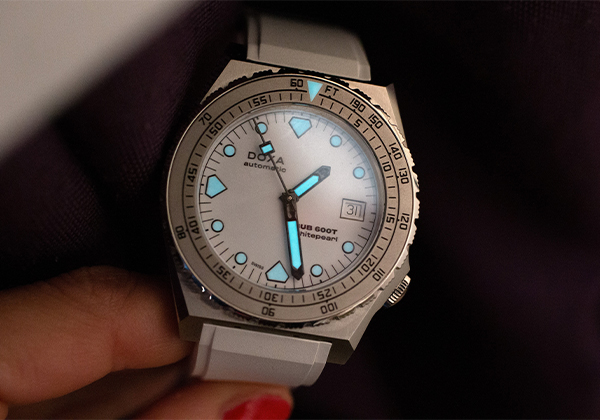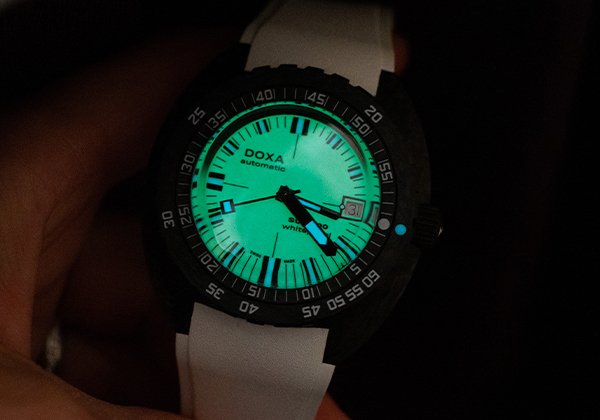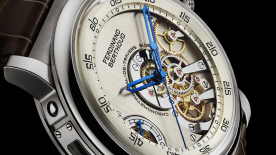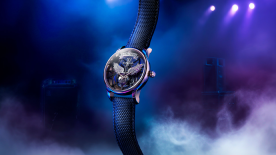Some watchmakers save their colours for special occasions. Not Doxa. The brand is known for having introduced the first orange dial on a dive watch, in 1967, to enhance its legibility. None of the practical details of the first SUB 300 were left to chance. Doxa sent engineers to study how different shades showed up underwater, and brought in divers in to try out different shades in the murky depths of Lake Neuchâtel. Orange (named Professional) came out on top, being considered the most visible at the depths then deemed most useful for diving. Commander Jacques Cousteau was an early fan, equipping the Calypso’s divers with Doxa timepieces. Orange has since been joined by yellow (Divingstar), silver (Searambler), turquoise (Aquamarine), blue (Pacific) and navy (Caribbean). Doxa has cemented its reputation as a brand that likes its colours, along with a touch of black (which, for our purposes, we may think of as the sum of all the colours).

White becomes you
It might seem odd, but the colour of winter snow is the perfect complement to a summer tan. For a brand with such an affinity to the ocean, it was only a matter of time before this new shade appeared in the catalogue. Doxa introduced its first white dial in 2021, exclusively in the SUB 200 collection. The experiment was a success. This spring, the brand has gone full steam ahead. All of its collections – SUB 300, SUB 300 Carbon, SUB 300T, SUB 600T and SUB 1500T – now feature the Whitepearl colourway, which contrasts beautifully with the black markings on the dial. They all come with a matching white rubber strap or a steel bracelet, except for the SUB 300 Carbon, which is supplied with a rubber strap only. And that’s how every beach – even the beaches of Neuchâtel – can look like a sun-kissed scene from St Tropez.

Integral lighting
Phosphorescence is a vital feature of any watch intended to be consulted at night or in the ocean depths. In the early days, watchmakers seized upon the possibilities offered by radium, and then tritium, but the terrible effects of radioactivity on human health – particularly radium, which was banned in 1968 – compelled them to seek out different materials. Super-LumiNova, a benign compound based on strontium, was developed by a Swiss-Japanese joint venture. This highly valuable powder is now considered the state of the art, thanks to its continually improved formula that makes it increasingly powerful, more long-lasting and more versatile in terms of its use in different applications.

In a first for Doxa, the dial of the SUB 300 Carbon (which is COSC certified) is entirely coated in Super-LumiNova. By day, its face remains immaculately white. But once all traces of light have gone, it glows with a green radiance. The dial colour contrasts with the blue Super-LumiNova applied to the markers and hands – the most visible colour underwater.

So, if you ever see a sea-turtle do a double-take, it’s because it thought it saw a phosphorescent octopus, queen of the abyss, sitting on your wrist.





